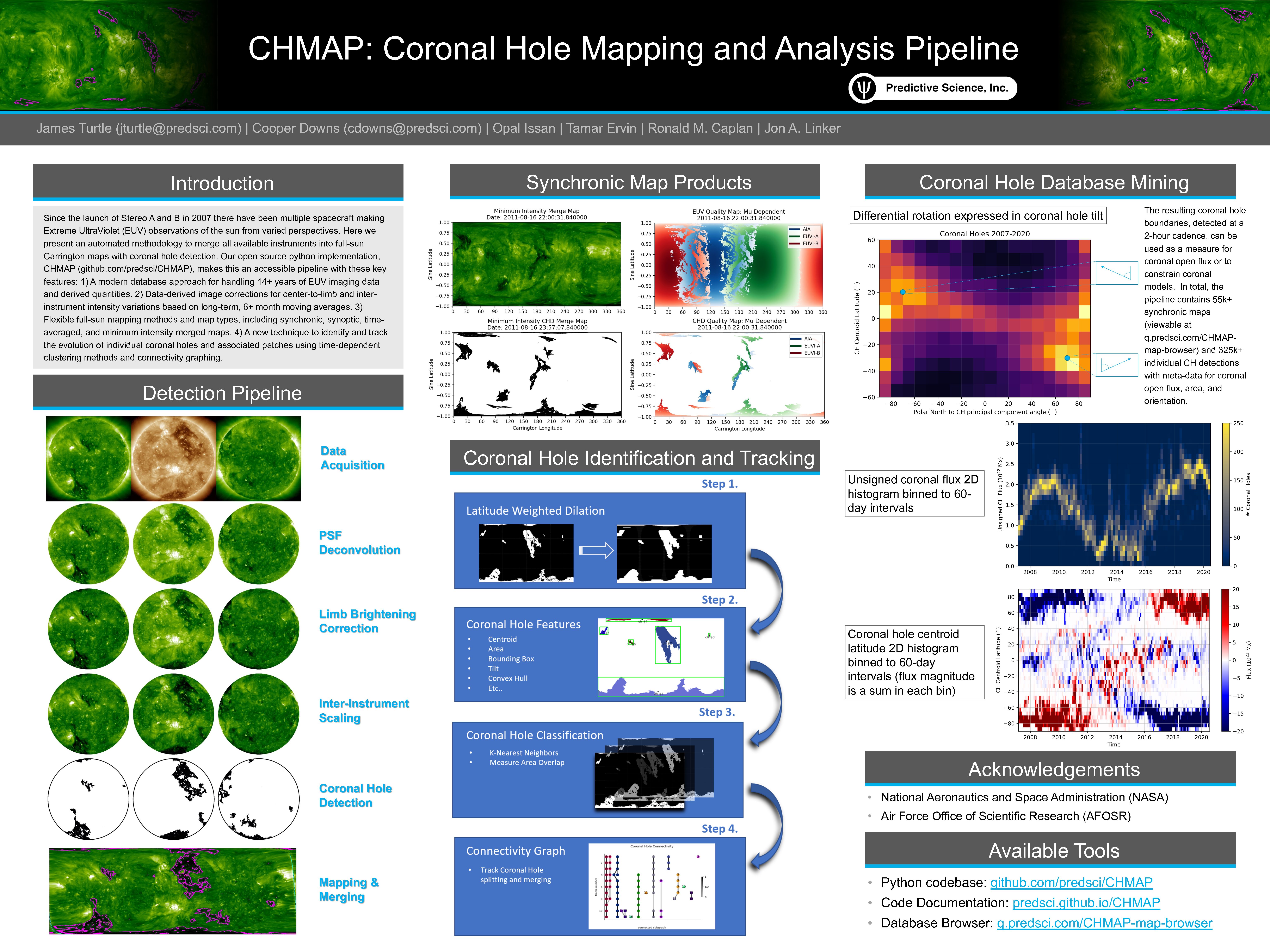Authors: James Turtle (PSI), Cooper Downs (PSI), Opal Issan (PSI), Tamar Ervin (PSI), Ronald M. Caplan (PSI), Jon A. Linker (PSI)
Since the launch of Stereo A and B in 2007 there have been multiple spacecraft making Extreme UltraViolet (EUV) observations of the sun from varied perspectives. Here we present an automated methodology to merge all available instruments into full-sun maps with coronal hole detection. Our open source python implementation, CHMAP (github.com/predsci/CHMAP), makes this an accessible pipeline with these key features: 1) A modern database approach for handling 14+ years of EUV imaging data and derived quantities. 2) Data-derived image corrections for center-to-limb and inter-instrument intensity variations based on long-term, 6+ month moving averages. 3) Flexible full-sun mapping methods and map types, including synchronic, synoptic, time-averaged, and minimum intensity merged maps. 4) A new technique to identify and track the evolution of individual coronal holes and associated patches using time-dependent clustering methods and connectivity graphing. The resulting coronal hole boundaries, detected at a 2-hour cadence, can be used as a measure for coronal open flux or to constrain coronal models. In total, the pipeline contains 55k+ synchronic maps and 325k+ individual CH detections with meta-data for coronal open flux, area, and orientation, which are available interactively at q.predsci.com/CHMAP-map-browser. We conclude by highlighting some of the data-mining analysis that CHMAP facilitates.


